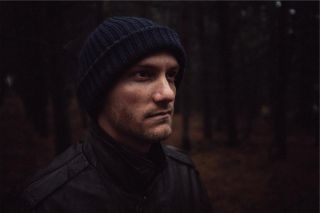Anxiety
How We Keep People Away Without Words
Social Anxiety can nonverbally communicate things we don't intend.
Posted October 13, 2015

Imagine this scenario. A cute, cuddly Siberian Husky is nestled in the carpet, munching on a rawhide bone. You reach down to scratch at his warm, fuzzy ear, but something happens. Suddenly his lips peel back to reveal sharp teeth. The fur on the back of his neck spikes upward as he stares at you, unblinking. Would you still pet the dog? Or would you draw your hand back and apologize sarcastically to your supposed best friend for trying to show him some affection? (I’m so sorry that I annoyed you with my love, Mr. Bo Jangles).
Hopefully you would back off, because that dog is communicating aggression. He is telling you that he is not okay with your shenanigans, and that staying the course will earn you a swift chomp on the finger.
You receive the message clearly, but the dog uses no words. He communicates nonverbally. Humans use the same kind of nonverbal communication all the time to convey all sorts of things, like happiness, anger, openness, sadness, or confusion. It helps us understand one another, help each other, and work together in groups. Sometimes when we experience social anxiety, however, we say things nonverbally that we don’t realize or intend.
Often we do this with our face. Facial expression is our primary means of nonverbal communication, our way of letting the world know how we’re doing. It’s often a billboard for our emotions. As the McDonald’s drive-through attendant hands you a hot fudge Sunday, you smile. All is well. When a glob of hot fudge escapes your spoon and kamikazes onto your new shirt, you grimace. All is not well. What do you suppose happens with the face when you feel anxious? We’ve all seen it. Imagine what tension looks like: slightly widened eyes, furrowed brow, compressed lips, contracted muscles under the cheekbones...
What does that communicate about us? It says, I’m afraid and I want to get on the first train out of here. The message to others is probably either “help me” or “get away from me.” With social anxiety there’s a twist. People who have been coping with social anxiety for a long time are usually pretty good at masking their anxiety. They’ve learned that fear can be interpreted as vulnerability by others, particularly by bullies, so to protect themselves they use their face to communicate something different. Something less vulnerable. This may be anger, apathy, displeasure, superiority, or some other mood/emotional state, but the message is always the same.
Don’t talk to me, but don’t think I’m weak. You don’t want to mess with me. It’s just like the dog showing his teeth, a clear message that if you do something he doesn’t like, you will get bitten. For people with social anxiety, this is a way to cope. It is a way to avoid social interaction (because if you avoid interaction, you won’t feel anxious), and a warning to people who might try to embarrass them.
The problem is that it works. People stay away. Consequently, relationships suffer and the person with social anxiety feels increasingly isolated.
When they realize this and muster the motivation to build friendships, often they don’t know how. Because they’ve been so focused on avoidance and defense, they sometimes haven’t learned basic social skills. This is tremendously frustrating. You approach others, you strike up conversation, you try to connect, but the friendships don’t grow and you don’t understand why. You probably assume there’s something wrong with you. You must be unlikable.
Nope. People are responding to your nonverbals. They don’t know you want friendship because your face, body language and tone still communicate, “I don’t like talking to you.”
This is why the “Act as if” technique works. It’s deceptively simple. You act as if you don’t have social anxiety. That’s it. You pretend you are excited to talk to people and you’re having a good time. And like magic, people respond positively. They respond to your nonverbal communication, which now conveys openness and warmth. Think about the people you feel most comfortable with. The people who are the most welcoming. What are they communicating nonverbally — what do they say with their facial expressions, posture, hand gestures, or even tone of voice? Emulate that, and see what happens.
This won’t eliminate the social anxiety, obviously, but it can help in certain situations — and it can give you a glimpse at positive, mutually satisfying interactions. If you experience social anxiety, please seek help from a qualified mental health professional. With a little work, and a little guidance, you can be on the road to recovery in no time.


